What would the world be like without Linux?
More than twenty years ago, Linus Torvalds, the father of Linux, said, “If 386BSD had been available before I created Linux, then Linux might not have been born.”
Later, when people look back and reflect, there is no shortage of people who think: “If Linux had not flourished, FreeBSD would have filled the void today.”
BSD (Berkeley Software Distribution, also known as Berkeley Unix), the most inextricable offshoot of Unix, had its cradle at the University of California, Berkeley, the most radical leftist stronghold in the United States at the time. At this liberal school, senior Ken Thompson created and brought back Unix, junior Bill Joy took over the development of BSD, and many others, both on and off campus, worked together to preserve this “open source flame” from the havoc of the GNU/Linux school. It was only through the efforts of more participants, both on and off campus, that the “open source fire”, which was different from GNU/Linux, was preserved from a disaster.
Perhaps because of the collegiate style, or perhaps because the creators of BSD were geniuses, BSD as a whole has an “elitist” air, disciplined and inherently arrogant in its commitment to the public good and its vision. BSD is held by a small group of elites who strive to distance themselves from Linux while maintaining an elitist product philosophy. As OpenBSD founder Theo de Raadt said, “We spend more time making things better than making it to the taste of the masses.”
01 The Pre-History of Open Source That Was Passed Over
What is the first thing that comes to mind when we talk about the origins and history of open source?
More often than not, we think of the Free Software Movement, GNU, Linux, copyleft, OSI, and so on. The line of open source history is more often drawn at the moment of the birth of the GNU Project in 1983, and the part of the “pre-history of open source” represented by BSD is often overlooked.
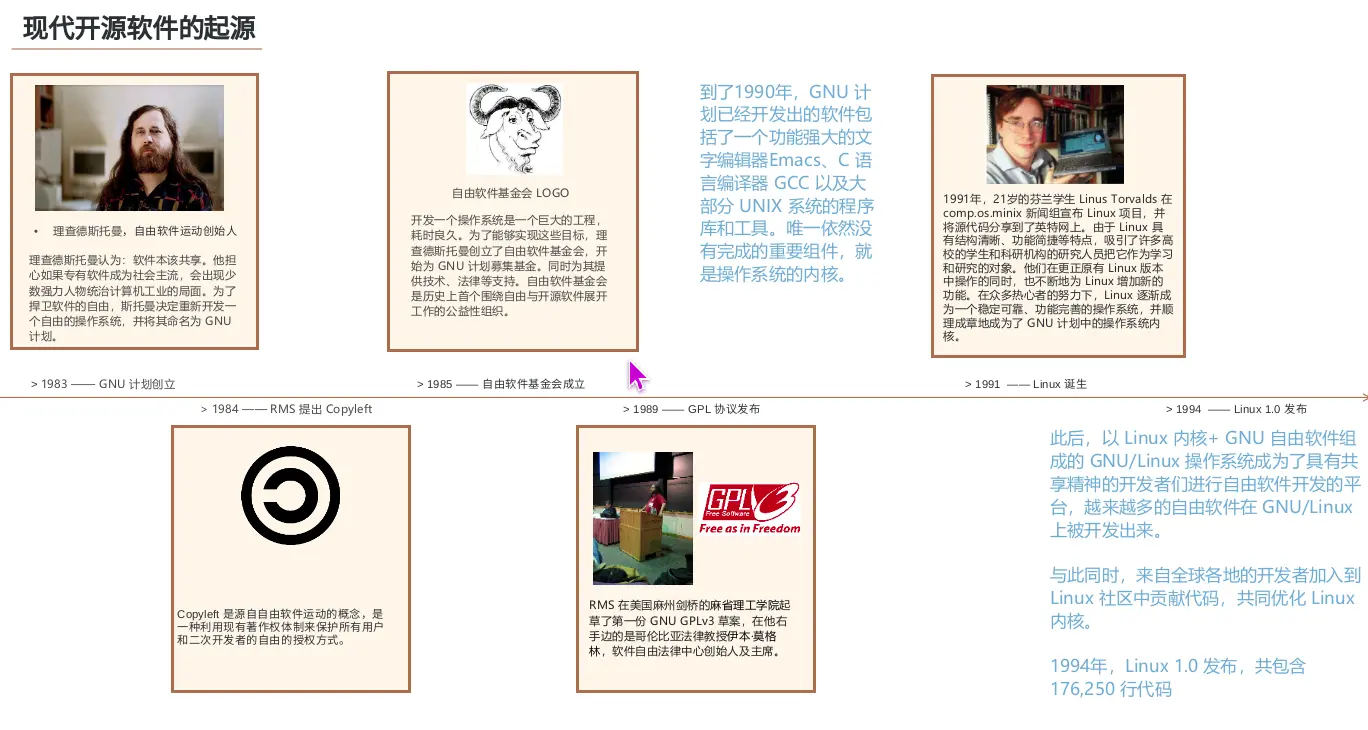
But in reality, the tradition of open source, the free spirit of open source software, the war against proprietary monopolies and so on had taken root long before that, and were concentrated in BSD.
The story begins in 1970. At the time, Bell Labs was part of the growing AT&T, and researcher Ken Thompson had been working on Multics (a time-sharing operating system) for a few years, and had nothing better to do than write a game called Space Travel on the system, which resulted in Bell Labs dropping out of the Multics program that year Multics, Thompson’s game could not run.
In order to continue playing the game, Ken Thompson spent a month writing a small operating system, which is the prototype of Unix. So, 1970 is also known as the year of Unix.
Then, along with Dennis Ritchie, Ken Thompson rewrote the Unix operating system in C. Fortunately, AT&T was inundated with problems. Fortunately, AT&T was restricted by the U.S. Sherman Antitrust Act from selling goods other than telephones and telegraphs, which opened the window for Unix to flow to academic institutions.

For these reasons, the source code and binaries of Unix were readily available to many universities and research institutions, which allowed them to freely analyze and improve it, exchange ideas and results, and thus contribute to the rapid development of Unix. The role of Berkeley cannot be overlooked.
In 1975, Berkeley purchased DEC’s newest computer, the PDP-11/70. This coincided with Ken Thompson’s return to his alma mater as a visiting professor on a sabbatical year. It was on this computer that he installed the latest version of Unix (version V6). Under Ken Thompson’s guidance, Bill Joy, then a graduate student, began compiling the first BSD in 1977. Unix grew considerably under AT&T’s laissez-faire status.
It didn’t last long. In 1977, AT&T was finally freed from anti-trust constraints after its breakup and immediately commercialized Unix. Starting with the V7 version of UNIX in 1979, the Unix license began to prohibit universities from using Unix source code, including in lectures. If you wanted to continue using it, you had to pay a significant fee to get a license.
Furthermore, BSD system distributions contain the full source code for each part, rather than being distributed in a pure binary format. As a result, every external distribution of BSD was under the license of AT&T. By the late 1980s, when Unix was becoming more popular, AT&T steadily increased the license fee from the initial $99 to $250,000.
“We wrote this code and they (AT&T) claim it as theirs. It pissed us off because they took our work, didn’t pay us a dime, and made money by selling the damn license.”
– Marshall Kirk McKusick (who was personally involved in the development and release of 4.3BSD and 4.4BSD)
At this point, UNIX began to divide into two major schools of thought: the AT&T line of commercial versions of Unix and the BSD line (where the former was closed-source and the BSD was open-source). This pattern reached its peak in the early 1990s with more than 100 versions of Unix, including SUNOS, IBM AIX, HP-UX, DEC Ultrix and SCO Xenix, Sun Solaris, and others. These Unix variants were all based on open source versions of Unix and were mostly closed source commercial versions.
In the early 1990s, BSDi (a company formed by the Berkeley Computer Research Group CSRG) began selling its own version of Berkeley Unix, which the University of California had been selling for many years. In 1992, AT&T sued the University of California and BSDi, claiming that BSD Unix contained proprietary AT&T code. But in fact, AT&T’s version of Unix at the time, System 5, also contained a significant amount of code originally written by BSD hackers – including the TCP/IP stack.
So, hackers like McKusick were outraged. Lawyers at the University of California seized the opportunity and filed a countersuit against AT&T for copyright infringement. And so began a massive, historic copyright war.
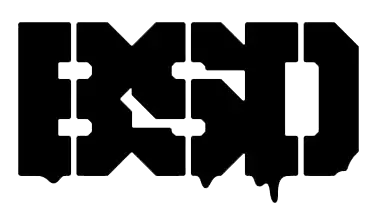
From the planting of Unix by Ken Thompson in the 70’s to the heated lawsuit in the 90’s, the main characteristics of FOSS (Free and Open Source Software) are evident in BSD.
First of all, the BSD development model is a typical open model.
When the IT industry was first created, there was no such thing as open source and closed source, and the software was dependent on the hardware bundle that came with it, and was provided in the form of source code, rather than the implementation code that is available today. Unix source code prior to commercialization was virtually open to the public, and as BSD spread to more and more organizations, users began adding additional features and programs and sending them back to the team at Berkeley to be included in the next BSD release.
Hackers returned modified versions – a model of openness that existed before the open source movement had a name.
Secondly, BSD is the quintessential free software.
In June 1989, under the BSD license, Berkeley released the first freely redistributable version, Network Release 1 (Net/1), which contained code implementing aspects of the OSI network stack and the new TCP/IP algorithm.
The BSD license is a loose license. Licensees could distribute the code in source or binary form without paying any fees or royalties to Berkeley. Although Berkeley charges $1000 for a tape, anyone can get a copy from someone else for free. In fact, shortly after it was released, several large websites used it for anonymous FTP.
Finally, the spirit of BSD is freedom, and BSDers are not afraid of power.
During this period, many engineers who supported open source likened themselves to the Freedom Rebel Alliance in Star Wars, fighting against the evil monopoly empire. In later years, a number of historians have described the Berkeley hackers as “freedom fighters “. As posterity would judge: none of them saw themselves as crusaders, but every now and then a hint of idealism would seep out.
“The goal of many of us: to produce the ideal system we have in mind for our own use. That’s what Ken Thompson and Dennis Ritchie set out to do when they founded Unix.” In a later interview, Professor Bob Fabry, who founded the Berkeley Computer Research Group CSRG, said this.
While BSD was mired in the mire, another story was unfolding in the open source world: in 1984, RMS launched the Free Software movement with the slogan “GNU’s not Unix. In 1991, Linux was born and the largest universe in the open source world, the GNU/Linux discourse, was formed.. Next, Linux evolves. And BSD dropped out of center stage.
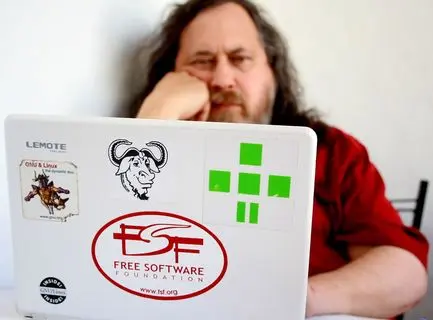
02 Two years after the loss, things are different
“The lawsuit between AT&T and BSD is one of the most egregious applications of the contemporary copyright system.” Yifeng Nguyen argues The essence of this lawsuit is.
A company whose interests are paramount, blatantly waging a war to the detriment of others for a product it doesn’t care about for trivial reasons.
This is so because the war was so devastating to BSD – all development was halted, users were terrified that they would be pursued by AT&T, and use of BSD declined dramatically. Finally, in 1994, a settlement was reached and development of BSD resumed.
This is simply a shame, actually intends to BSDi enter and stupid legal disputes AT&T’s when, in the occurrence leadership vacuum, BSD community full of fear, uncertainty and doubt in the critical moment, it led to a massive loss of territory to Linux outcome.
– – Jordan Hubbard, one of the founders of FreeBSD
From 1992 to 1994, BSD lost two years. These two years would later prove to be crucial: the early 1990s coincided with a decisive era for the computer industry. Hardware was rapidly evolving, Intel’s 80x86 chip was introduced, the era of the personal computer was upon us, and the business model of IT technology was changing …… BSD was stuck in a lawsuit and could not port the OS. Many of the people who should have contributed to BSD contributed code and bug fixes to Linux instead.
We have a considerable technical background and good mind, but the lack of adequate legal safety awareness and effective leadership can unite the different tribes in BSD as a difficult moment, to lead us out to bring significant harm to the BSD community storm. We lose a very important strategic two years.
– Jordan Hubbard, one of the founders of FreeBSD
In fact, the 386BSD that Linus mentioned at the beginning of this article is the most promising BSD successor.
Linus started out as a Finnish university student who couldn’t afford a workstation, so he wrote his own OS that ran on 386. If he had known that BSD had no legal problems and could be ported to 386, he would have joined the development of BSD instead of writing one himself. (Funny how that lawsuit changed the fate of Linus.)
What is 386BSD? 386BSD and Linux development started almost at the same time.
In fact, after Net/1 (1989), Keith Bostic, a member of the Berkeley Computer Research Group’s CSRG, led a project to open source the AT&T code and re-implement most of the Unix utilities. 18 months later, all the AT&T-derived utilities had been replaced, except for six kernel files, which could not be easily rewritten.
To be on the safe side, in 1991, the Berkeley Computer Research Group CSRG released a version that did not contain these six files, Network Release 2 (Net/2). Within just six months, Willian Jolitz and Lynne Jolitz (yes, husband and wife) wrote six replacement files and ported BSD to an Intel 80386-based microprocessor, and the new operating system became known as 386BSD.
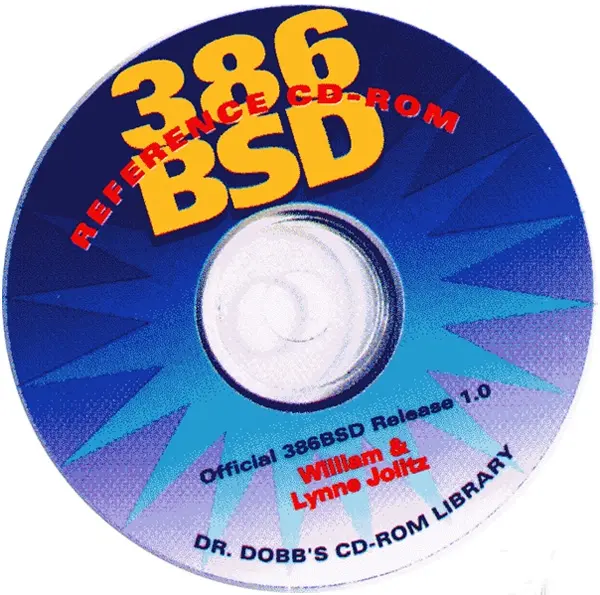
The initial version of 386BSD worked, but had almost no functionality. As a result, the Jolitz’s began working on creating a full version, which received a lot of attention for some time, but unfortunately was split.
At the time, development of 386BSD was slow and developers were unhappy with the speed at which 386BSD was incorporating new patches. As the Jolitzes and patchkit maintainers disagreed about the future direction and release schedule of 386BSD, the patchkit maintainers created the FreeBSD project in 1993 to continue their work.
Around the same time, the NetBSD project was created by a diverse group of 386BSD users to unify 386BSD with other BSD development branches into a multi-platform system. Shortly after, an internal dispute over the NetBSD kernel led to the creation of OpenBSD. At that point, the open source BSD lineage consisted primarily of FreeBSD, NetBSD, and OpenBSD.
Many believe that this split directly led to BSD’s lagging position in today’s operating system competition.
03 Still proud, but life is getting weaker
There is a classic saying about BSD and Linux.
BSD is what you get when a bunch of UNIX hackers sit down to try to port a UNIX system to the PC. Linux is what you get when a bunch of PC hackers sit down and try to write a UNIX system for the PC.
In fact, BSD is a direct derivative of traditional Unix. Linux, on the other hand, is a loosely based Unix derivative (Minix) and a newly created OS.

And arrogance is almost inherent in BSD’s blood.
Bill Joy, the writer of the first version of BSD, was a child prodigy, and Salon’s story is full of praise: If anyone has the right to be arrogant, it’s Bill Joy.
Bill Joy wrote vi, the editor that so many programmers loved that he became known as the “editor god”, and compared it to Emacs, the “god’s editor” written by GNU’s creator RMS, which started a “war” between programmers over editors.
Frankly, none of us really understand Bill and his curious mindset. Bill is definitely a smart guy, very difficult to complete a lot of code but he is such a person, if they are for you. the company’s work, then, will own and a workstation locked in a room, eating such food pizza, do not open the door and put everything stuffed under the door.
- Jordan Hubbard, one of the founders of FreeBSD

The arrogance of not only Bill Joy, but of BSD as a whole, was very much out there. Marshall Kirk McKusick, who later became deeply involved in FreeBSD, has stated that 90% of the code contributed by committers is unusable, and the small percentage that remains needs to be “were peed upon to make them smell like Berkeley “This is why FreeBSD maintains a whole hierarchy.
This arrogance is also reflected in the way they view open source collaboration and GNU/Linux.
Starting with Bill Joy, he doesn’t share the basic tenet of Linux – to believe in a large community of volunteer programmers. He does not believe that having more programmers equals better code:
Most people are terrible programmers, leaving many people staring at code that won’t really find bugs. The real bugs are found by a few very smart people. Most people looking at code won’t see anything …… Thousands of people cannot be expected to contribute and all meet high standards.
Of course, this view has since been proven wrong. And the differences between BSD and GNU/Linux go far beyond that, their ideas about freedom are also in the opposite direction.
We never considered GPL license like BSD, like it’s short and flexible like him popular for engineers and lawyers to read, which achieved our aim, although it limits our responsibility (liability), but! At the same time as the code uses as many people. GPL is not what we think of identity license, but a political declaration.
– Jordan Hubbard, one of the founders of FreeBSD
Linux they do what they do because they hate Microsoft, we do what we do because we love Unix.
– Theo de Raadt, founder of OpenBSD
I do not mind whether the user back to their feedback to modify the code, and if this happens, is the icing on the cake (an added bonus), but I What do not tend to do to make it happen, such as a gun to force it to the other side into submission (enforce at the point of a gun ).
– Jordan Hubbard, one of the founders of FreeBSD
For this reason, on the official FreeBSD website Introduction, it refers to itself as “Liberal “, and deliberately distinguishes itself from “Free “.
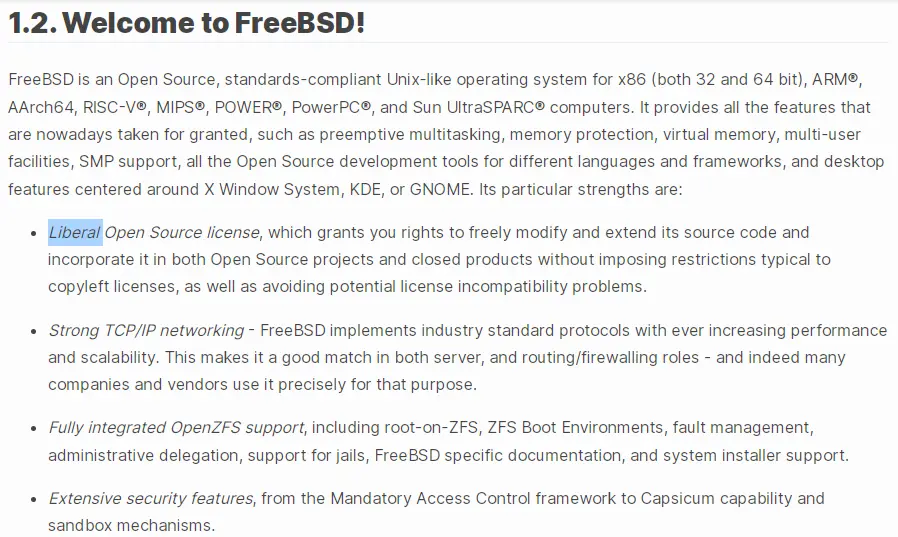
After the split, FreeBSD, NetBSD and OpenBSD have not fared as well as they could have.
OpenBSD, the most high profile, for example, struggled with funding issues at one point in 2014. In addition, its founder Theo de Raadt was so outspoken that his condemnation of the U.S. war against Iraq led the Defense Advanced Research Projects Agency (DARPA) to suspend its $2.3 million grant to OpenBSD. Since then, OpenBSD has been a fixture in the news for a long time (and Luo Yonghao’s Hammer Technology has been its white knight on several occasions) for “crying poor” at the beginning of the year.
Of the three, no one has done better than FreeBSD, and when NetBSD and OpenBSD had their problems, many BSD developers moved to FreeBSD. Today it is used on millions of servers around the world, by companies such as Netflix, Apple (which has a deep connection to FreeBSD), WhatApp, IBM, Nokia, etc. It has infiltrated almost half of the current IT industry without ever being visible, and is known as the “unsung hero of operating systems It is called “the unsung hero of operating system”.

In an interview in 2020, Deb Goodkin, executive director of the FreeBSD Foundation, called out this:
We need more PR for FreeBSD and get more tech journalists like yourself to write about FreeBSD. We also need more trainings and classes that include FreeBSD in universities, trainings/workshops at technical conferences, more FreeBSD contributors giving talks at those conferences, more technical journalists, as well as, users writing about FreeBSD, and finally we need case studies from companies and organizations successfully using FreeBSD.
In fact, BSD also needs greater recognition and wants to be in the spotlight for all to see.
McKusick has it right when he says that the differences in organizational strategy between the BSD and Linux camps are trivial. What matters is that open source, not Linux or BSD, wins out.